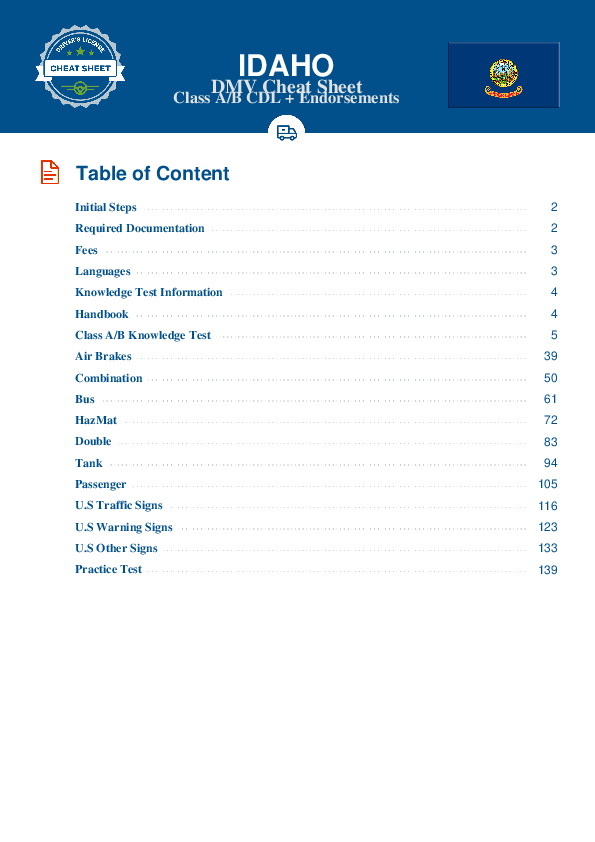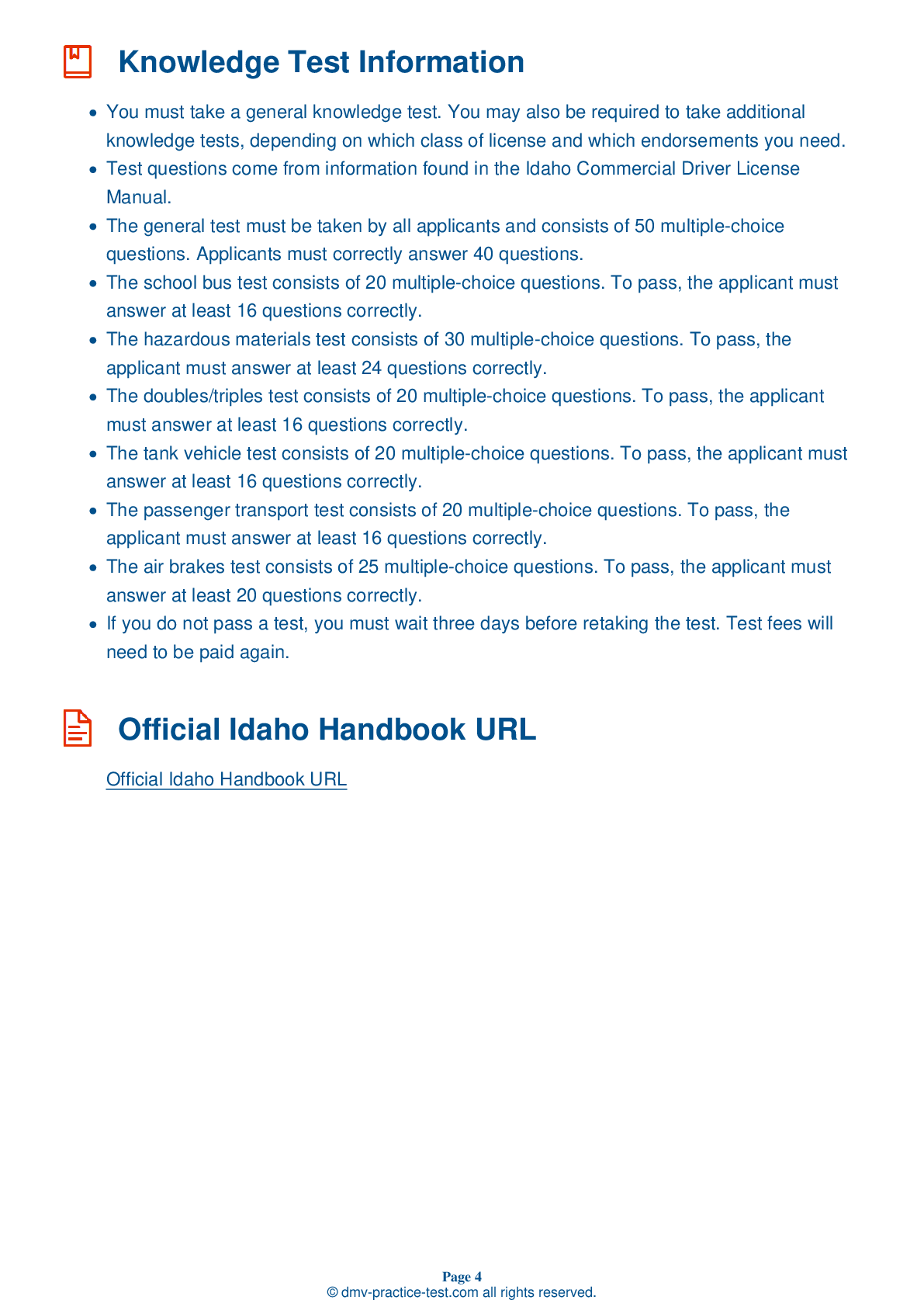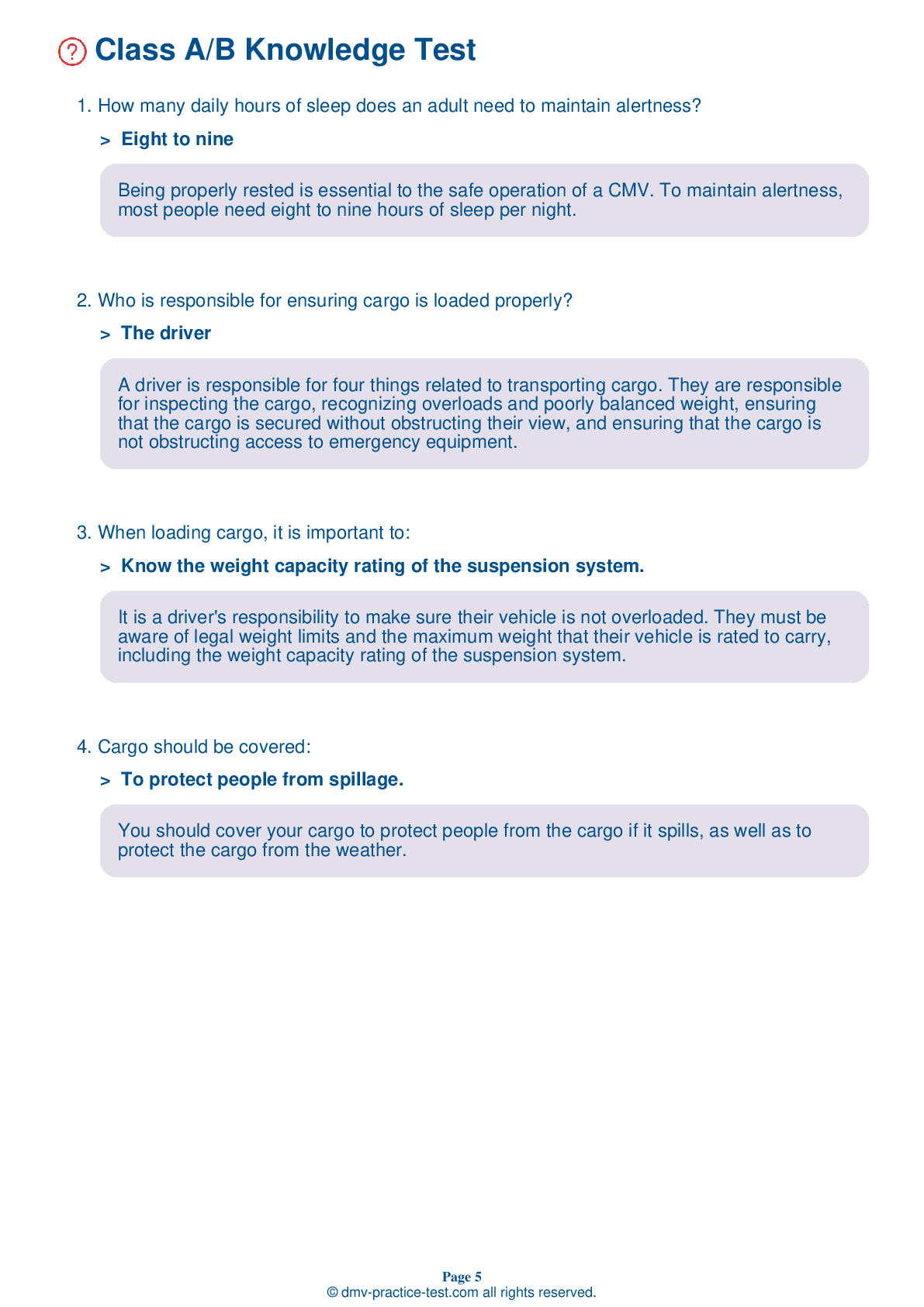Class B Driving Test | Idaho 2025 #2 Page 5 of 7
Train for FREE online with our Idaho class B license test. The official exam test consists of several obligatory parts, with all of them checking your knowledge of different blocks of road rules. If you need to obtain a ID CDL class B permit in 2025, practice as much as possible. Free sample tests published on our website will help you check and improve your knowledge and boost your grades. Please bear in mind that CDL class B requirements may vary from state to state.
30 . When cargo is being loaded, weight should be placed:
To reduce the risk of a vehicle tipping over, the weight of cargo should be distributed as low as possible.
31 . A second conviction of operating a CMV with a blood alcohol content (BAC) of 0.04 percent or more will result in:
A first conviction of operating a CMV with a blood alcohol content (BAC) of 0.04 percent or higher will result in the loss of your CDL for one year. A second conviction of operating a CMV with a minimum BAC of 0.04 percent will result in the loss of your CDL for life.
32 . A low air pressure warning signal should activate:
In an air brake system, a low air pressure warning signal must come on if air pressure in the tanks falls below 60 psi. This warning signal may come in the form of a light, a buzzer, or a wig wag.
33 . Stopping distance can be affected by:
Factors that can affect stopping distance include the vehicle's speed, its weight, and the traction provided by the road surface.
34 . While driving, a driver should:
It is essential that you are aware of what is happening on all sides of your vehicle at all times. Scan the road ahead and make regular checks of the mirrors on both sides of your vehicle while you are driving.
35 . To prevent your vehicle from rolling backward when beginning to move, you can:
To ensure that your vehicle does not roll backward when beginning to move after a stop, you should partly engage the clutch before removing your right foot from the brake pedal.
See the exact questions that will be on the 2025 Idaho DMV exam.
99.2% of people who use the cheat sheet pass the FIRST TIME
Lillian MCcranie explains how our CDL study guide was helpful in passing the exam and recommends it to everyone.
Cameron tells us how he purchased the CDL exam, and found it to be a useful tool which helped him pass the exam and find a job.



